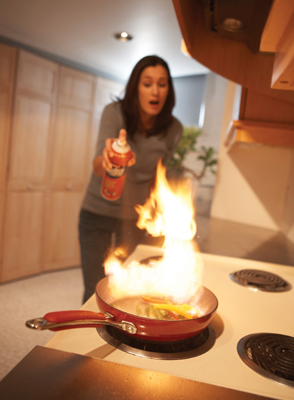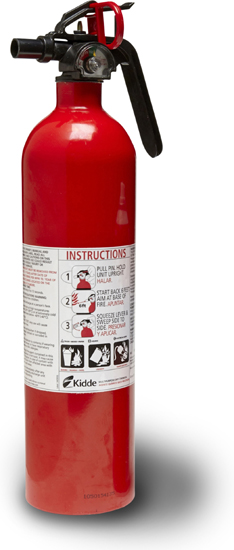
They make a mess
Extinguishers blast the area with chemicals. So don’t use one unless you have to. In the case of a small stovetop fire, for example, a pot lid will usually smother the flames—and won’t leave you with cleanup chores.
A fire extinguisher can make the difference between a minor fire and total destruction. Experts recommend that you have one on each level of your home. Just remember that household extinguishers are meant for small fires. With a larger or fast-spreading fire, forget the extinguisher and get out of the house.
Don’t get bogged down in the details of the fire extinguisher classification system. Most extinguishers sold at home centers are labeled “A, B, C”—and that’s exactly what you need to put out the most common types of home fires. You’ll find several models that fit nicely in a drawer or under the sink and even smaller spray-can versions.
• Stand a few feet from the fire, start blasting and move toward the fire. The instructions will tell you how far away to start.
• Move the extinguisher’s stream in a sweeping motion.
• Aim at the base of the fire. Spraying the flames does no good.
Most extinguishers have a very short “discharge time” before they run out of fire suppressant (10 seconds is typical). That means you can’t waste time or suppressant. Aim carefully before you pull the trigger.

Extinguishers blast the area with chemicals. So don’t use one unless you have to. In the case of a small stovetop fire, for example, a pot lid will usually smother the flames—and won’t leave you with cleanup chores.

If you have an old extinguisher, look for an expiration date on the label. Also make sure the pressure gauge reads “full.”